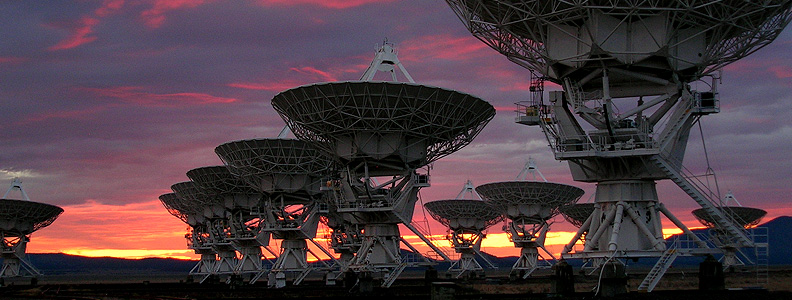The VLA is a collection of 27 radio antennas located at the National Radio Astronomy Observatory site in Socorro, N.M. Each antenna in the array measures 25 meters (82 feet) in diameter and weighs about 230 tons. The Y-shaped array can be arranged into four different configurations: A, B, C or D, depending on the distance between the antennas. The VLA is an interferometer, which means that the data from each antenna can be combined electronically so that the array effectively functions as one giant antenna. Dedicated in 1980, the VLA is used by astronomers from around the world to study everything from black holes to planetary nebulae.
Astronomers recently used the National Science Foundation’s Very Large Array (VLA) radio telescope (above) to help find the most distant water yet seen in the universe, in a galaxy more than 11 billion light-years from Earth. Previously, the most distant water had been seen in a galaxy less than 7 billion light-years from Earth. The soggy galaxy is dubbed MG J0414+0534. In a region near its core, water molecules are acting as masers, the radio equivalent of lasers, to amplify radio waves at a specific frequency.
The water molecules showed themselves with a tell-tale radio “fingerprint.” The first indication came from the giant, 100-meter-diameter radio telescope in Effelsberg, Germany, and scientists confirmed the discovery using the VLA. The astronomers say their finding indicates that such giant water masers were more common in the early universe than they are today. MG J0414+0534 is seen as it was when the universe was roughly one-sixth of its current age. (Image courtesy: National Science Foundation)
*Bee-Tee-Dubs, you might’ve noticed this post has a VLT (Very Long Title)

